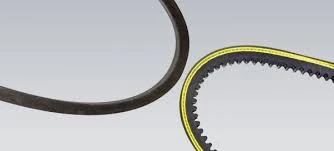- Arabic
- French
- Russian
- Spanish
- Portuguese
- Turkish
- Armenian
- English
- Albanian
- Amharic
- Azerbaijani
- Basque
- Belarusian
- Bengali
- Bosnian
- Bulgarian
- Catalan
- Cebuano
- Corsican
- Croatian
- Czech
- Danish
- Dutch
- Afrikaans
- Esperanto
- Estonian
- Finnish
- Frisian
- Galician
- Georgian
- German
- Greek
- Gujarati
- Haitian Creole
- hausa
- hawaiian
- Hebrew
- Hindi
- Miao
- Hungarian
- Icelandic
- igbo
- Indonesian
- irish
- Italian
- Japanese
- Javanese
- Kannada
- kazakh
- Khmer
- Rwandese
- Korean
- Kurdish
- Kyrgyz
- Lao
- Latin
- Latvian
- Lithuanian
- Luxembourgish
- Macedonian
- Malgashi
- Malay
- Malayalam
- Maltese
- Maori
- Marathi
- Mongolian
- Myanmar
- Nepali
- Norwegian
- Norwegian
- Occitan
- Pashto
- Persian
- Polish
- Punjabi
- Romanian
- Samoan
- Scottish Gaelic
- Serbian
- Sesotho
- Shona
- Sindhi
- Sinhala
- Slovak
- Slovenian
- Somali
- Sundanese
- Swahili
- Swedish
- Tagalog
- Tajik
- Tamil
- Tatar
- Telugu
- Thai
- Turkmen
- Ukrainian
- Urdu
- Uighur
- Uzbek
- Vietnamese
- Welsh
- Bantu
- Yiddish
- Yoruba
- Zulu
Zář . 14, 2024 00:23 Back to list
automotive v ribbed belt
Understanding the Automotive V Ribbed Belt An Essential Component in Your Vehicle
The automotive V ribbed belt, also known as a serpentine belt, plays a crucial role in the smooth functioning of your vehicle’s engine. This flexible rubber belt is designed with multiple grooves that provide a larger surface area for engaging with pulleys, ensuring efficient energy transfer from the engine to various components. In modern vehicles, the V ribbed belt has replaced the older belt designs due to its advantages in reliability, efficiency, and ease of installation.
Functionality and Importance
The primary function of the V ribbed belt is to drive multiple peripheral devices attached to the engine crankshaft, including the alternator, water pump, power steering pump, and air conditioning compressor. By efficiently distributing power, the belt helps to maintain optimal operation of these components, which is essential for vehicle performance. A well-functioning V ribbed belt ensures that the engine runs smoothly and that accessories work harmoniously, preventing system failures that could lead to costly repairs.
Design and Construction
The design of the V ribbed belt incorporates ribbed patterns that fit tightly into the grooves of the pulleys. This ribbing maximizes grip and minimizes slippage, enhancing power transmission efficiency. V ribbed belts are often made from a composite of rubber materials reinforced with polyester or steel fibers, giving them the durability needed to withstand the harsh conditions found in an automotive environment. Their design also allows them to handle a range of temperatures and resist wear and tear caused by constant flexing and exposure to engine fluids.
automotive v ribbed belt

Signs of Wear and Replacement
Despite their durability, V ribbed belts do experience wear and tear over time. It is essential for vehicle owners to be aware of the signs indicating that a belt replacement may be necessary. Common signs of a failing V ribbed belt include squeaking or squealing noises, visible cracks or frays, and a decrease in performance of the powered accessories. Regular inspections can help in identifying these issues early, allowing for timely replacements that prevent further damage to your vehicle’s engine.
Maintenance Tips
To extend the life of your V ribbed belt, regular maintenance is vital. Ensure that the belt is correctly tensioned, as both loose and overly tight belts can cause damage. It is also advisable to check the alignment of the pulleys, as misalignment can lead to premature wear. Most manufacturers recommend replacing the V ribbed belt every 60,000 to 100,000 miles, but this may vary based on specific vehicle models and driving conditions. Always refer to your vehicle’s owner manual for the manufacturer’s recommendations.
Conclusion
The automotive V ribbed belt is a small yet crucial component that plays a significant role in your vehicle's overall functionality. Understanding its importance, recognizing the signs of wear, and adhering to maintenance guidelines can ensure that your vehicle operates efficiently and reliably. By taking proactive measures in managing your V ribbed belt, you can contribute to the longevity of your vehicle and ensure a smoother driving experience.
-
Korean Auto Parts Timing Belt 24312-37500 For Hyundai/Kia
NewsMar.07,2025
-
7PK2300 90916-T2024 RIBBED BELT POLY V BELT PK BELT
NewsMar.07,2025
-
Chinese Auto Belt Factory 310-2M-22 For BMW/Mercedes-Benz
NewsMar.07,2025
-
Chinese Auto Belt Factory 310-2M-22 For BMW/Mercedes-Benz
NewsMar.07,2025
-
90916-02660 PK Belt 6PK1680 For Toyota
NewsMar.07,2025
-
drive belt serpentine belt
NewsMar.07,2025

